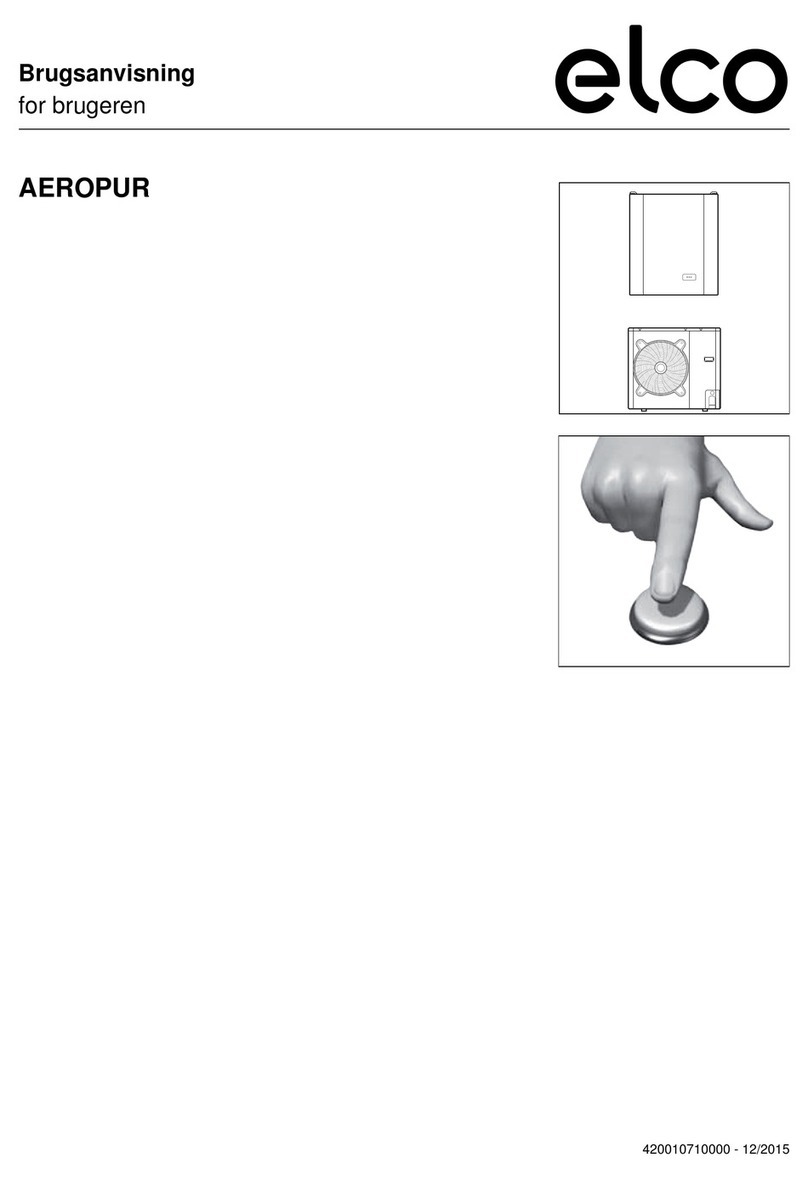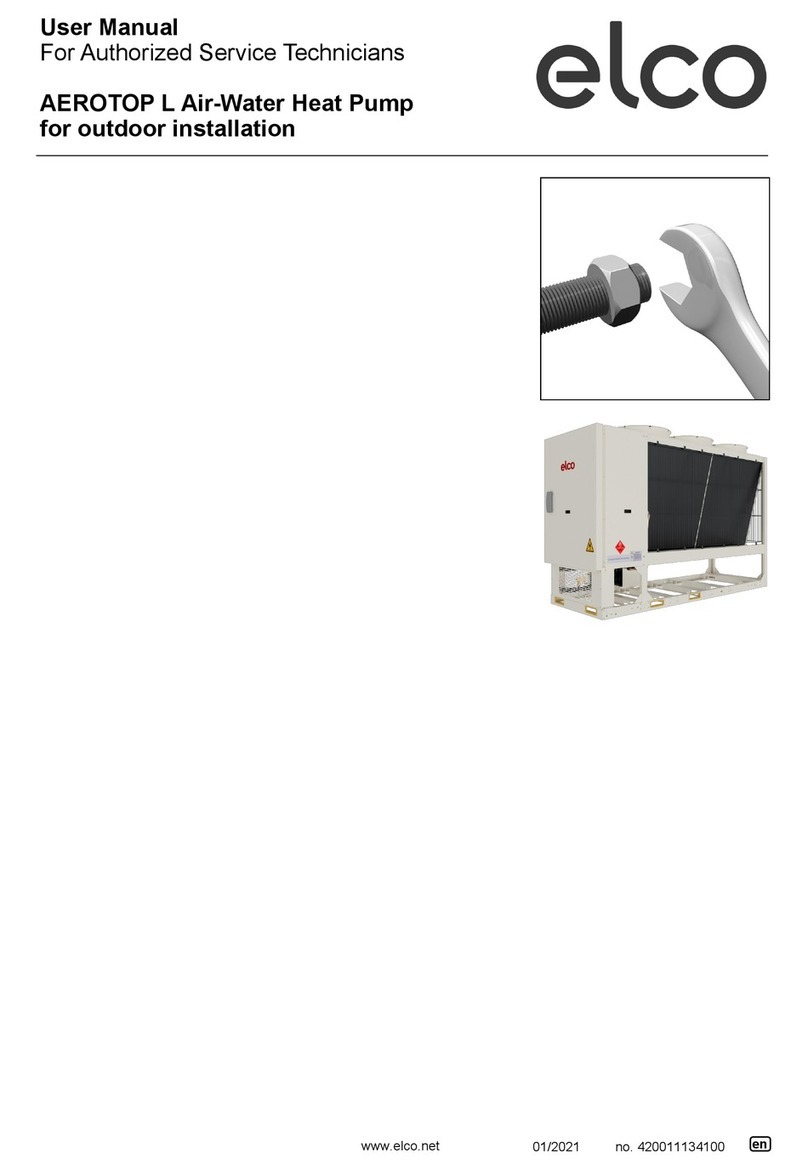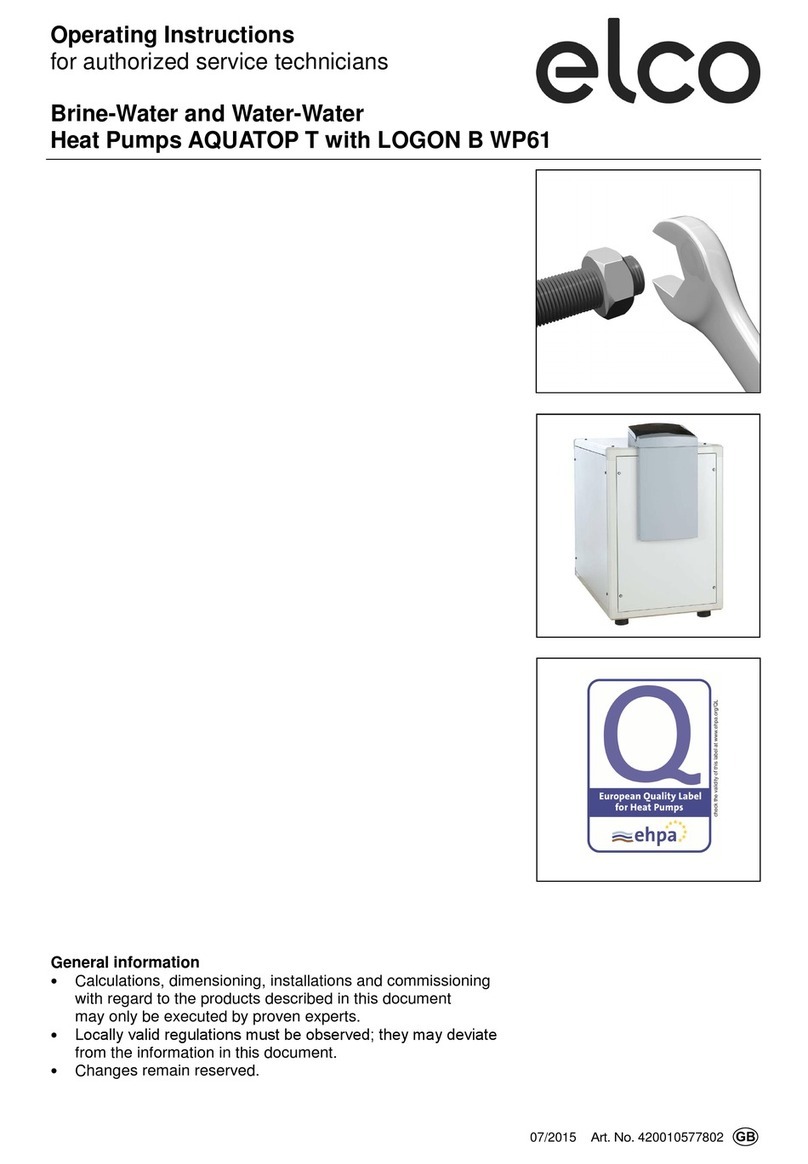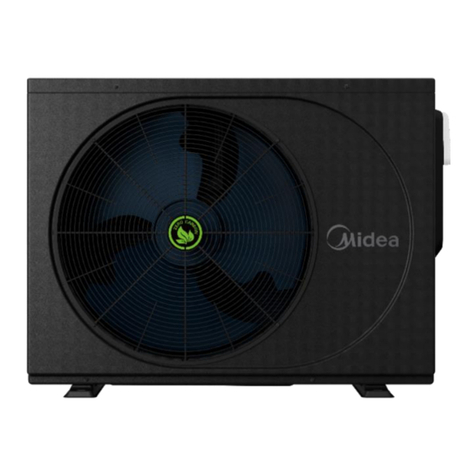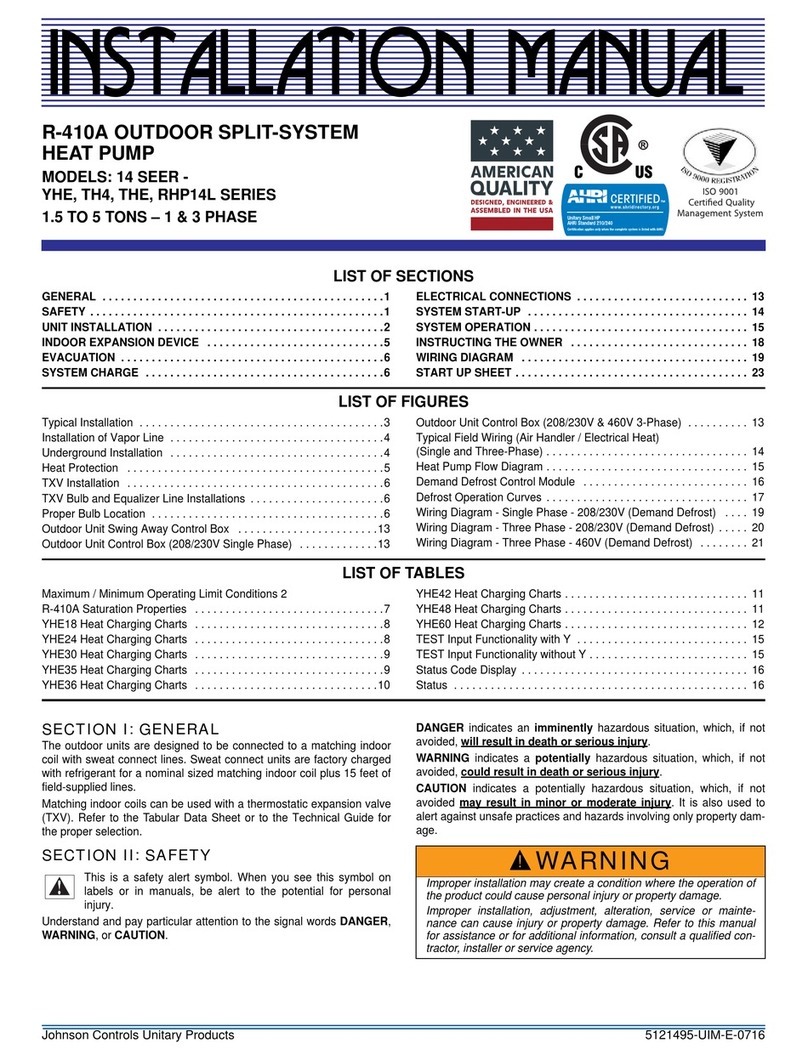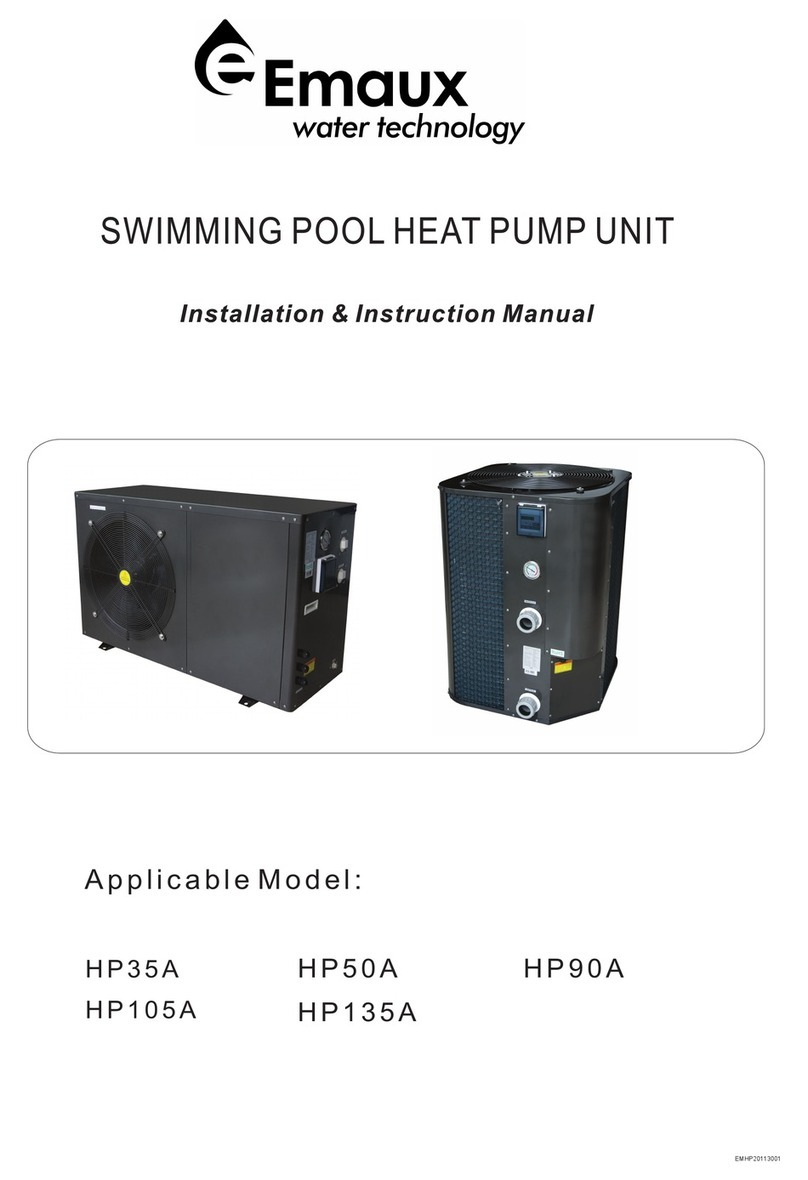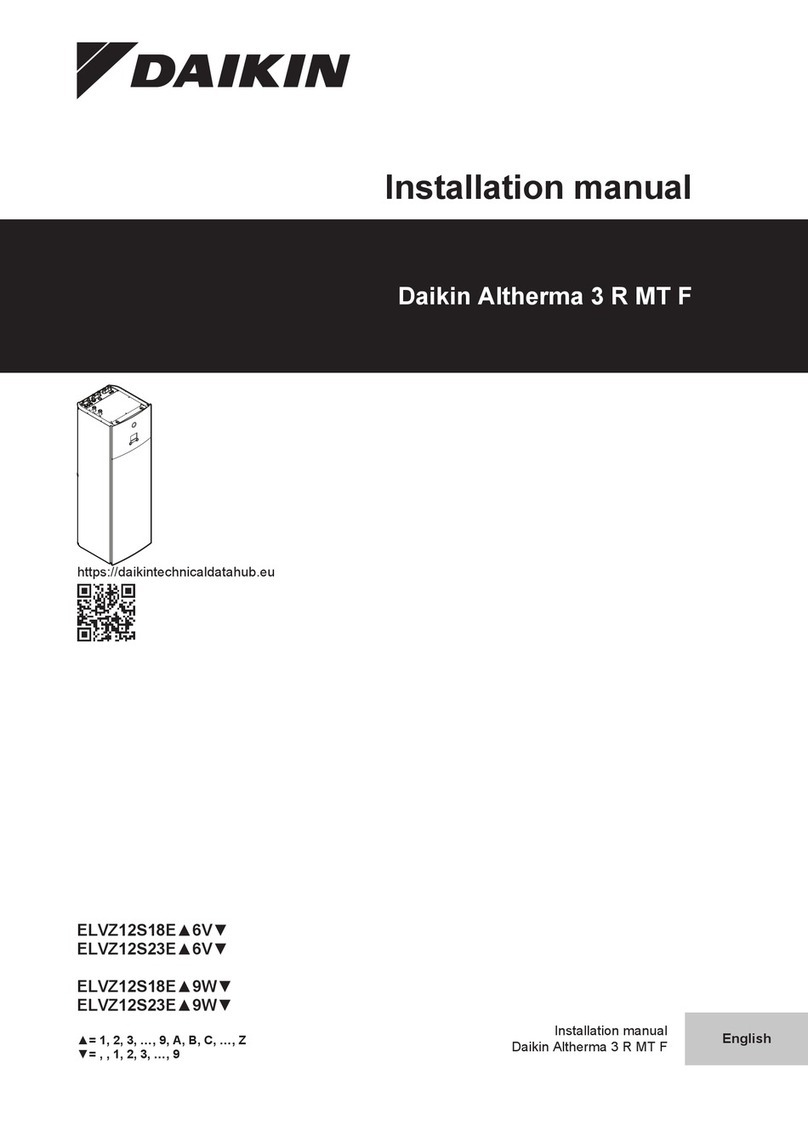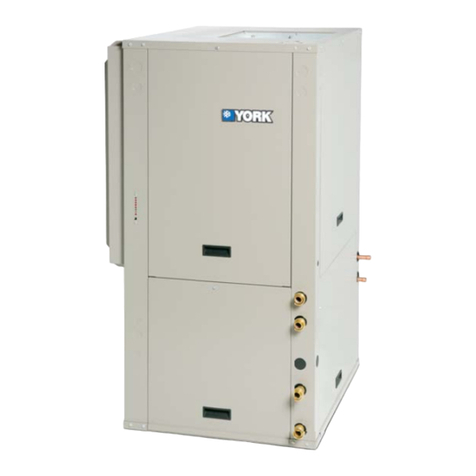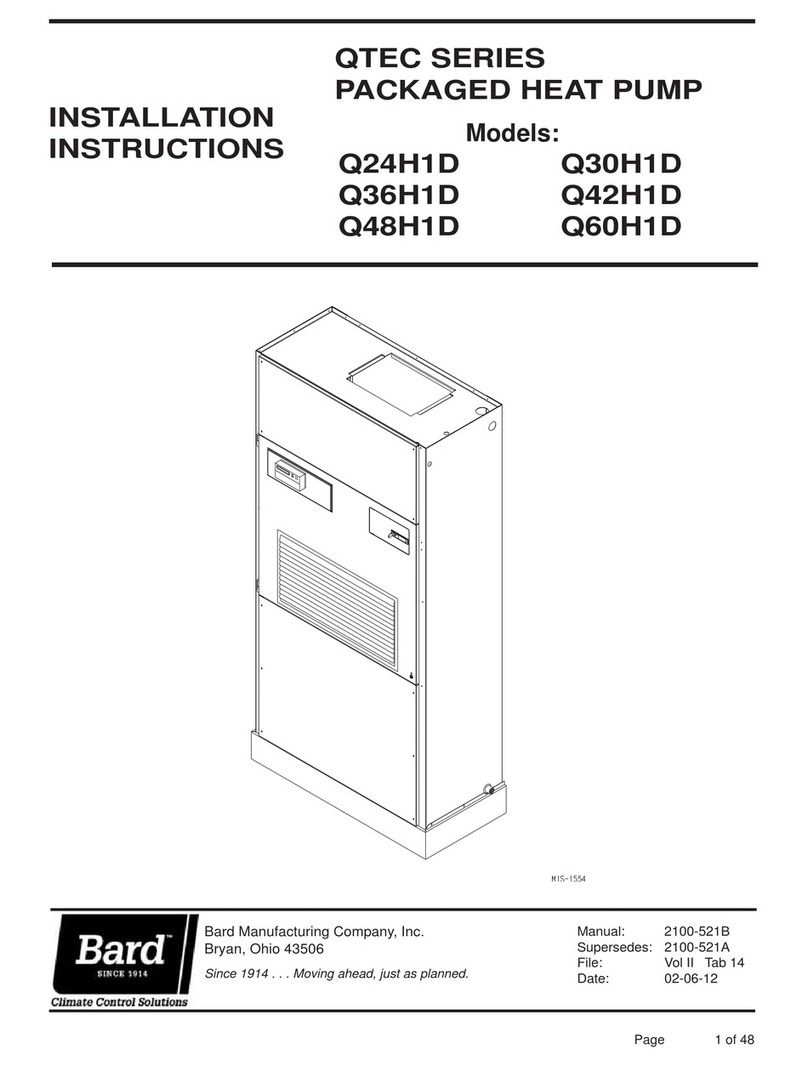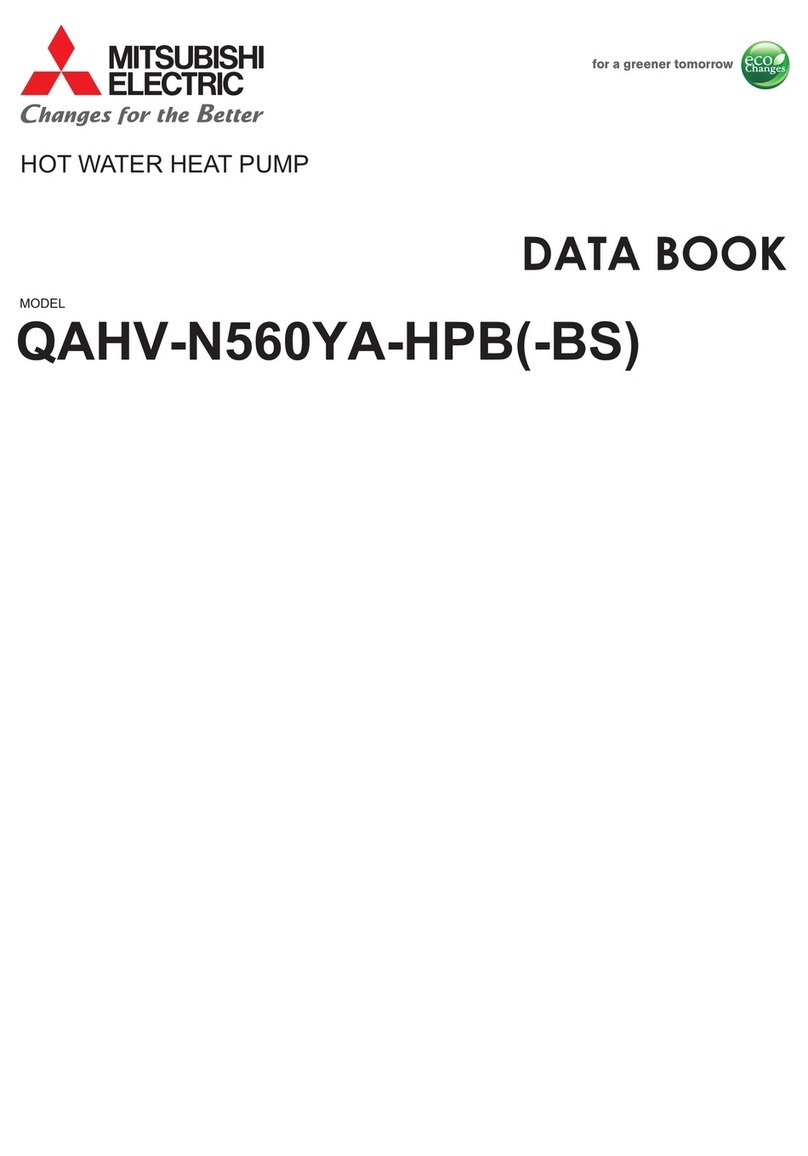
17
Planning Notes
Brine-Water Heat Pumps
Application Range
Brine-water heat pumps are usually
used as monovalent heaters.
If the heat pump and the borehole heat
exchanger have been dimensioned
correctly, geothermal energy provides
a relative constant heat source with a
good performance rating.
Monovalent Operation
If the heat pump is used in a monova-
lent manner (without auxiliary heater),
the following basic data must be
carefully determined and calculated:
• Determine heat capacity demand
acc. to local standards (SIA 384/2,
DIN 8900-6, DIN 8901) or deter-
mine based on the previous
energy consumption.
• Max. required flow temperature of
heating system.
The heat pump must deliver 100% of
the required average building capacity
at the lowest exterior temperatures and
max. flow temperatures.
Bivalent Operation
If the heat pump is used in a bivalent
manner (with auxiliary heater), the
following data must be carefully
determined and calculated:
• Determine heat capacity demand
acc. to local standards (SIA 384/2,
DIN 8900-6, DIN 8901) or deter-
mine based on the previous
energy consumption.
• Max. required flow temperature of
heating system.
• Determine the bivalent point
(switchover point).
The auxiliary heater is usually
dimensioned for 100% capacity.
When used in a bivalent-parallel
operating mode, the borehole heat
exchangers must be dimensioned by
an accredited engineering office.
Permits
A permit for the utilization of geothermal
energy must be obtained from the
locally responsible office or authority.
Each connection of an electric
heat pump requires a permit of the
responsible electric company or utility.
The electrical heat pump data must be
known for the application.
Borehole Heat Exchanger
The annual performance factor of a
heat pump (HP) is affected by the
configuration and dimensioning of the
borehole heat exchanger (BHE).
Dimensioning requires taking into
account the cooling capacity of the HP
at the configuration point, the service
duration per year, the geology, the
position, layout, and depth of the BHE.
The standard reference points is as
follows: cooling capacity at B0 /W35
(brine inlet temp. = 0°C,
flow temp. = 35°C) is assumed.
The general borehole and installation
conditions of the drilling company must
be observed when positioning geother-
mal probes.
For further information see chapter
‘Basic Principles for Configuring
Geothermal Probes’.
Thermal Recovery Time of the Soil
The annual heat pump operation
should not exceed 1800 hours per
year. If the number of operating hours
is higher, the borehole heat exchanger
must be dimensioned larger.
If service water is heated year-round,
the, borehole heat exchanger length
must be increased according to the hot
water demand so that a sufficient
amount of energy is replenished from
the surrounding soil or rock to the BHE.
This applies especially with well insu-
lated buildings (low energy) where
hot water heating takes up a large
share of the annual energy demand.
Brine Heat Carrier
The brine circuit requires the use of
non-polluting antifreeze agents (e.g.
Antifrogen N).
Compliance with the concentration of
20 - 30 vol. % is required and must be
checked periodically. The borehole
heat exchanger must be filled according
to the operating instructions. If anti-
freeze is added to a system subse-
quently, it cannot be guaranteed that
antifreeze and water are mixed properly.
Flush the pipe system before filling in
the heat carrier fluid. Never use air to
blow out the BHE. It must be filled with
fluid at all times. Pollutants may cause
decomposition of the heat carrier media.
This results in sludge, or the pollutant
itself may damage the heat exchanger
(malfunctions) and other components.
Connection Lines
Heat Source
The material compatibility of the lines
with the antifreeze agents must be
checked (no galvanized lines).
Connection lines must be kept as short
as possible. Condensation forms on
lines and fittings in warm rooms.
This must be prevented with vapor proof
insulation material or collected with a
drip tray. The installation must be
protected from corrosion (material
selection).
To be able to detect leaks, a pressure
controller must be installed in the brine
circuit for monitoring. It must be possible
to shut off each borehole heat exchanger
individually from the point of the distri-
butor.
Implementation of the Borehole Heat
Exchanger System
See separate basic scheme.
Equipment Setup
Installation location according to the
general planning notes, min. distances
and clearances see equipment
dimensions.

























